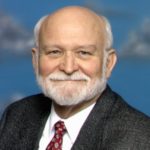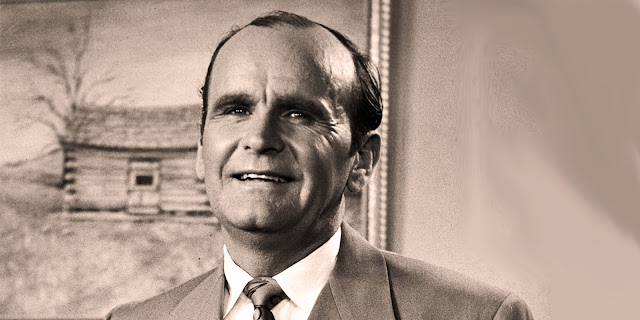Home › Forums › GENERAL DISCUSSION – Articles, Personal, Encouragement, Prayer, Testimonies, Fellowship, Missions , Revival, etc. › The Healing Ministry of William Marian Branham – JD King
Tagged: blind healed, cross-eyes, deaf healed, healing, JD King, Revival, spirit, William Branham
- This topic has 0 replies, 1 voice, and was last updated 6 years, 11 months ago by
 Ron McGatlin.
Ron McGatlin.
-
AuthorPosts
-
April 15, 2018 at 9:55 pm #9430
 Ron McGatlinKeymaster
Ron McGatlinKeymasterThe Healing Ministry of William Marian Branham Posted: 12 Apr 2018 02:45 PM PDT
William Marion Branham (1909–1965), a “mystery, a conundrum, and an enigma,”[1] became the most celebrated (and controversial) figure of the salvation-healing revival (1946-1958). Branham’s ministry was extremely notable. As many as 35,000 people received healing in the first year of his national healing ministry alone.[2]
Healing Stories
In his burgeoning meetings, Branham was “seeing healings take place every night—deaf people healed, cross-eyes straightened, short legs lengthened.”[3] One of the astounding testimonies was the restoration of the sight of a blind man. Branham wrote,
“The Spirit of the Lord called him in the meeting, and in a vision, I saw him healed. I said, “Sir, God has healed you,” and he walked away just as blind as ever. He came back in a few minutes and said, “Say, I don’t understand. You told me I was healed.” I replied, “You are.” “Well,” he answered, “I can’t see.” I said, “I know you are healed; I saw a vision of your being healed.” He answered, “It looks to me if I were healed, my eyes would be opened.” I said, “That has nothing to do with it; your eyes will come open.” He replied, “What must I do?” I said, “Just begin to praise the Lord.” So he did. The next night I could hardly preach. He was up in the second balcony, and he’d jump up and say, “Everybody keep still. Praise the Lord for healing me.” I’d get started again, and he would go to shouting, “Praise the Lord for healing me.” But still, he couldn’t see. I left the city, but he didn’t give up. He sold papers on the corner and would say, “Extra! Praise the Lord for healing me!” Well, the old fellow went to the barber shop to get a shave. The barber got one side of his face shaved, and he was a sort of smart-aleck and wanted to make some kind of remark about the services, so he said, “Say, dad, I heard that you went up to see the ‘healer’ when he was here in the auditorium.” The barber continued, “I heard you got healed, didn’t you?” He was just making fun of him because he was blind, but John said, “Yes, praise the Lord for healing me.” And his eyes came open in the barber chair. With a towel around his neck, he started running down the street with the barber behind him.”[4]
Another remarkable testimony was the healing of retired Congressman William David Upshaw (1866-1952). This politician publicly recounted the incident:
“The first time I saw Brother Branham I was on crutches. I walked into Calvary Temple on those crutches. My blessed wife was there and told me these words: “When you appropriate faith, you’re healed.” Brother Branham said that night, “Lay your hands on your loved ones you want to be healed.” My wife fell down on her knees and laid hands on me while Brother Branham prayed, and the people were being healed all around. About that time, they took Brother Branham out, but the pastor, LeRoy Kopp, came back and said, “Brother Branham said, ‘The Congressman is healed.’” I laid down my crutches and started to run.”[5]
Words of Knowledge
In his meetings, Branham actively employed words of knowledge — Spirit-led utterances of truth not naturally ascertained. Weaver states, “The evangelist’s ability to tell people the secrets of [their hearts], their names, addresses, and the natures of their illnesses became one of the most common elements”[6] of his healing repertoire.Branham would call out details about illnesses and pray for those who were afflicted. Donald Gee, a British Pentecostal, acknowledged that his gift was “very often . . . startling in its accuracy.”[7]
Ern Baxter, who also ministered alongside Branham from 1947 until 1953, made a similar statement. He remarked that
“he never saw his discernment miss once. Whenever Ern Baxter was given a card containing information on the individual’s medical history, Branham was able, in every case, to correctly diagnose the illness without ever knowing what was on the card in Baxter’s hand.”[8]
Walter Hollenweger, a European theologian, also acknowledged this truth. What was significant in the healing meetings was
“Branham’s ability to name with astonishing accuracy the sickness, and also often the hidden sins, of people whom he had never seen. The author, who knew Branham personally and interpreted for him in Zurich, is not aware of any case in which he was mistaken in the often-detailed statements he made.”[9]
Tragic Errors
Branham was a fierce innovator. Sadly his innovations began to extend into biblical interpretation. Influenced by Oneness Pentecostals, Branham rejected the orthodox understanding of the trinitarian nature of God. On one occasion, he asserted, “Trinitarianism is of the devil. I say that. Thus saith the Lord!”[10]It should be noted that Branham’s propensity toward the bizarre did not end with his denouncement of the Trinity. C. Douglas Weaver acknowledges that Branham,
“condemned denominationalism as the mark of the beast and espoused a “Jesus only” position regarding the Godhead and baptism . . . Branham’s increasing emphasis on predestination and eternal security was disliked by Pentecostals of Arminian heritage. Other “revelations” included the denial of an eternal hell and the doctrine of the serpent’s seed. According to Branham, Eve and the serpent had sexual intercourse, and Cain was born. Consequently, every woman potentially carries the literal seed of the devil. The race of Satan continues to the present day, most clearly revealed in those who reject the supernatural nature of the gospel. The most controversial “revelation” dealt with the major concern of Branham’s preaching eschatology during the 1960s. Branham constantly spoke about the forerunner of Christ’s second coming. … Undoubtedly, Branham came to regard himself as this prophet.”[11]
Concerned about Branham’s eccentrics, Kenneth Hagin, “a rising young evangelist from Tulsa, Oklahoma,”[12] approached his former publicist, Gordon Lindsay, sharing “a word that he believed the Lord had given him.”[13] Hagin was persuaded that “Branham was teaching false doctrine.” [14] The evangelist had
“erred by attempting to function as an authoritative teacher when he had no anointing to do so. Since Branham disobeyed his calling and created doctrinal confusion . . . God had to remove the father of the healing revival from the scene.”[15]
Hagin was resolute in his final assessment: “The leader of the deliverance movement was soon to be taken in death because he was getting into error and the Lord was having to remove him . . . for that reason.”[16]For the most part, Lindsay “accepted the interpretation of Kenneth Hagin.”[17] He acknowledged that Branham was “getting into error.”[18] Lindsay declared
“He thinks he is Elijah. He thinks he is the messenger of the covenant. The sad thing is that unscrupulous men around him are putting words into his mouth and because of his limited background, he believes them.”[19]
In time, Branham faded from the scene, ultimately dying in an auto accident in 1965. However one assesses Branham’s work, “it must be acknowledged that he did much to foster a very widespread expectation that God could be counted on to heal miraculously.”[20]This article was adapted from my work Regeneration: A Complete History of Healing in the Christian Church. Find out more here.
_________________________
[1]. Ronald Kydd, “Healing in the Christian Church,” The New International Dictionary of Pentecostal and Charismatic Movements, revised and expanded edition, eds. Stanley M. Burgess and Eduard M. van der Maas (Grand Rapids, Michigan: Zondervan, 2002), 709.[2]. This is a claim that he made in William Branham, Footprints on the Sands of Time: The Autobiography of William Marion Branham (Jeffersonville, Indiana: Spoken Word Publications, 1975), 177.
[3]. William Branham, “Believest Thou This?” in The William Branham Sermons: How God Called Me to Africa and Other Sermons, ed. Gordon Lindsay (Dallas, Texas: Voice of Healing Publications, undated), 82.
[4]. William Branham, “God Keeping His Promise,” in The William Branham Sermons: How God Called Me to Africa and Other Sermons, ed. Gordon Lindsay (Dallas, Texas: Voice of Healing Publications, undated), 61.
[5]. Congressman William David Upshaw quoted in William Branham, “Signs, Wonders, and Miracles,” in The William Branham Sermons: How God Called Me to Africa and Other Sermons, ed. Gordon Lindsay (Dallas, Texas: Voice of Healing Publications, undated), 31.
[6]. C. Douglas Weaver, The Healer-Prophet: William Marion Branham—A Study of the Prophetic in American Pentecostalism (Macon: Mercer University Press, 1986), 166.
[7]. Donald Gee, “The Word of Knowledge,” The Voice of Healing 5 (March 1953), 14.
[8]. Richard Riss, A Survey of Twentieth-Century Revival Movements In North America (Peabody, Massachusetts: Hendrickson Publishing, 1988), 107.
[9]. Walter Hollenweger, The Pentecostals (London: SCM, 1972), 354.
[10]. William Marion Branham. Revelation Chapter Four, Part Three. Volume 13 of the Revelation of Jesus Christ (Jeffersonville, Indiana: Spoken Word Publications, undated), 676.
[11]. C. Douglas Weaver, The Healer-Prophet: William Marion Branham—A Study of the Prophetic in American Pentecostalism (Macon, Georgia: Mercer University Press, 1986), 98-99.
[12]. Ibid., 105.
[13]. Ibid., 162.
[14]. Ibid., 105.
[15]. Ibid.
[16]. Kenneth Hagin quoted in Freda Lindsay, My Diary Secrets (Dallas: Christ For The Nations, 1977), 208–209.
[17]. C. Douglas Weaver, The Healer-Prophet: William Marion Branham—A Study of the Prophetic in American Pentecostalism (Macon, Georgia: Mercer University Press, 1986), 105.
[18]. Kenneth Hagin quoted in Freda Lindsay, My Diary Secrets (Dallas, Texas: Christ for The Nations, 1977), 208–209.
[19]. Ibid.
[20]. Ronald Kydd, Healing Through the Centuries: Models for Understanding (Peabody, Massachusetts: Hendrickson Publishing, 1995), 180.
-
AuthorPosts
- You must be logged in to reply to this topic.

